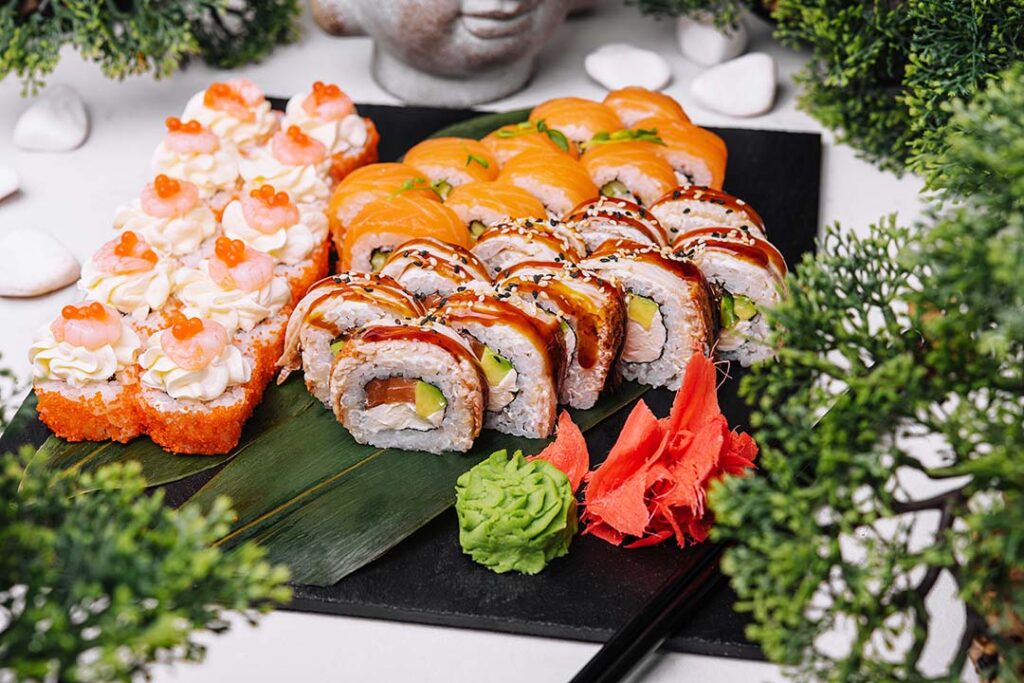Health
Tech Detox: How Unplugging Can Improve Your Quality of Life

In our fast-paced, digitally connected world, it’s become increasingly challenging to unplug and take a break from our screens. From smartphones to laptops and tablets, we are constantly surrounded by technology. While these devices offer countless benefits, they can also take a toll on our mental and physical well-being. Enter the “tech detox” – a practice that involves temporarily disconnecting from our devices to rejuvenate our minds and improve our overall quality of life.
The Digital Dilemma
The average person spends hours each day scrolling through social media, checking emails, and consuming content online. While these activities keep us informed and entertained, they also contribute to a host of problems, including anxiety, sleep disturbances, and decreased productivity. The constant barrage of notifications and the pressure to stay connected can lead to a sense of overwhelm and burnout.
The Benefits of Tech Detox
- Reduced Stress: Taking a break from technology can significantly reduce stress levels. Constant exposure to news updates and work emails can keep our minds in a state of perpetual alertness. A tech detox allows us to step away from this constant barrage of information and find moments of peace.
- Improved Sleep: The blue light emitted by screens can interfere with our circadian rhythms, making it harder to fall asleep. By unplugging before bedtime, we can enjoy more restful and rejuvenating sleep.
- Enhanced Productivity: Without the distractions of notifications and social media, we can focus better on tasks, increasing our productivity. Many find that a tech detox allows them to complete work more efficiently.
- Reconnection with Real Life: Unplugging gives us the opportunity to reconnect with the physical world and the people around us. It encourages face-to-face interactions and helps us appreciate the beauty of nature, art, and simple moments.
- Mental Clarity: A tech detox can clear mental clutter. It provides space for self-reflection, creative thinking, and a break from the constant stream of information overload.
Practical Tips for a Successful Tech Detox
- Set Boundaries: Designate specific times each day when you’ll be device-free, such as during meals or before bedtime.
- Use Apps: There are apps available that can help you track and limit your screen time. Consider using them to stay accountable.
- Find Offline Activities: Explore hobbies and activities that don’t involve screens, such as reading physical books, practicing mindfulness, or taking up a new sport.
- Inform Others: Let your friends, family, and colleagues know about your tech detox plans so they can support you and respect your boundaries.
- Start Small: If a complete tech detox feels overwhelming, start with shorter breaks and gradually increase the duration as you become more comfortable.
In a world that’s increasingly reliant on technology, taking a step back to detox from our screens can lead to profound improvements in our quality of life. By reclaiming our time and attention, we can reduce stress, improve our mental clarity, and foster deeper connections with the world around us. So, why not give it a try? Your well-being may just thank you for it.
Health
Learning from Japan: The Secrets to a Healthier Lifestyle

Japan, an archipelago known for its rich history, technological advancements, and unique culture, has another feather in its cap: a reputation for healthy living. The Japanese are often cited for their longevity, low obesity rates, and overall wellness. While there are many factors contributing to this, one of the most significant is their dietary habits. As the West, particularly the US, grapples with rising health concerns, there’s much to be learned from the Japanese way of life.
The Japanese Diet: A Symphony of Balance and Moderation
At the heart of Japanese cuisine is a philosophy of balance and moderation. Unlike the supersized portions often found in Western countries, Japanese meals emphasize portion control. This doesn’t mean they eat less; rather, they consume a variety of foods in smaller quantities. This approach not only ensures a range of nutrients but also prevents overeating.
Rice, a staple in Japanese meals, serves as a foundation. It’s complemented by an array of vegetables, fish, and lean meats. The Japanese have a deep appreciation for seasonal and local produce, which means their meals are not only fresh but also diverse, changing with the seasons.

Another significant aspect of the Japanese diet is their consumption of fish. Rich in omega-3 fatty acids, fish like salmon, mackerel, and sardines are known for their heart-healthy benefits. Contrast this with the Western diet, which often leans heavily on red meats that, when consumed in excess, can contribute to various health issues.
Soups, particularly miso soup, are another staple. Made from fermented soybean paste, miso is rich in probiotics, aiding digestion and promoting gut health. This emphasis on fermented foods, which also includes items like pickled vegetables, introduces beneficial bacteria into the diet.
Beyond the Plate: Mindful Eating and Physical Activity
It’s not just about what the Japanese eat, but also how they eat. The practice of “Hara Hachi Bu,” which translates to “eat until you are 80% full,” is a Confucian teaching that many in Japan abide by. This mindful approach to eating encourages individuals to listen to their bodies, eat slowly, and recognize when they are satiated.
Physical activity is seamlessly integrated into daily life in Japan. Whether it’s walking or cycling to work, practicing traditional arts like Kendo and Karate, or participating in group exercises in parks, the Japanese find ways to stay active. This is in stark contrast to the sedentary lifestyles that have become prevalent in many Western countries.
What Can the West Learn?
For those in the West looking to adopt healthier habits, the Japanese lifestyle offers several takeaways:
- Diversify Your Diet: Instead of sticking to the same foods, explore a variety of vegetables, grains, and proteins. This not only provides a range of nutrients but also keeps meals interesting.
- Embrace Seafood: Consider incorporating more fish into your diet. If you’re not a fan of fish, explore other sources of omega-3s like flaxseeds, walnuts, and chia seeds.
- Mindful Eating: Pay attention to your body’s signals. Eat slowly, savor each bite, and stop when you’re satisfied, not when you’re stuffed.
- Stay Active: Find ways to integrate physical activity into your daily routine, whether it’s taking the stairs, walking more, or picking up a new sport.
While cultural and geographical differences exist, the principles of a balanced diet and active lifestyle are universal. By looking to Japan and understanding their approach to health and wellness, there’s an opportunity for many in the West to make positive changes for a longer, healthier life.
Health
The Intricate Challenge of Eating Healthy: Unraveling the Why and How

In the modern age, where convenience is king and time is often a luxury, the challenge of consistently eating healthily is one that many grapple with. The allure of fast food, the ubiquity of processed snacks, and the ever-present temptation of sugary treats make it a Herculean task for even the most disciplined among us. But why is it that we find it so difficult to make healthier choices, and how can we navigate this complex landscape to achieve our nutritional goals?
The Science Behind Our Choices
To understand the difficulty of eating healthily, we must first delve into the intricacies of human biology and psychology. Our ancestors evolved in environments where high-calorie foods were scarce. As a result, our brains are hardwired to seek out and enjoy calorie-dense foods, a trait that was once advantageous for survival. This evolutionary predisposition, combined with the modern food industry’s expertise in creating hyper-palatable foods, results in a potent mix that drives us towards unhealthy choices.
Moreover, the neurotransmitter dopamine plays a pivotal role. When we consume foods high in sugar, fat, and salt, our brain releases dopamine, a “feel-good” chemical. Over time, we can become conditioned to seek out these foods to experience that dopamine rush, much like any other addictive behavior.
The Environmental Maze
Beyond our biological predispositions, the environment in which we live is a veritable minefield of unhealthy temptations. Advertisements for junk food are omnipresent, and unhealthy options are often cheaper and more accessible than their healthier counterparts. This accessibility disparity is particularly pronounced in “food deserts,” urban areas where residents have limited access to fresh, healthy foods.
Furthermore, our modern lifestyles often prioritize speed and convenience. In a world where we’re constantly on the go, it’s no wonder that quick, processed foods have become the norm. The time and knowledge required to prepare fresh, nutritious meals can seem daunting, especially when juxtaposed against the ease of grabbing a pre-packaged snack or ordering takeout.
Charting a Healthier Course
Given these challenges, how can we make healthier eating choices? One strategy is to harness the power of habit. While our initial forays into healthier eating might require conscious effort, over time, these choices can become ingrained habits. For instance, by consistently choosing a salad over a burger for lunch, we can rewire our brain’s reward system to associate pleasure with the healthier option.
Another approach is to make healthy eating more convenient. This might involve batch-cooking meals on the weekend, investing in a slow cooker to have a hot, nutritious meal ready when you come home, or simply keeping a stash of healthy snacks at your desk to avoid the mid-afternoon vending machine run.
Education is also paramount. By understanding the nutritional content of foods and the impact of various nutrients on our health, we can make more informed choices. This doesn’t mean you need a degree in nutrition, but even a basic understanding of macronutrients and micronutrients can go a long way.
Lastly, it’s crucial to remember that perfection isn’t the goal. Everyone has moments of weakness or situations where unhealthy food is the only option. Instead of beating ourselves up over these instances, we should view them as learning opportunities and focus on making better choices in the future.
While the deck might seem stacked against us when it comes to making healthy food choices, with understanding, strategy, and a bit of perseverance, we can navigate the modern food landscape in a way that supports our health and well-being.
Health
Artificial Intelligence in Medicine: The Future of Healthcare and Its Challenges

The intersection of technology and healthcare has always been a hotbed of innovation, but perhaps no advancement has been as transformative as Artificial Intelligence (AI). As AI continues to make inroads into various medical domains, it promises to revolutionize everything from diagnosis to treatment. However, with great power comes great responsibility, and the integration of AI in medicine is not without its challenges.
Revolutionizing Diagnostics
One of the most significant contributions of AI in healthcare is in the realm of diagnostics. Advanced algorithms can now analyze medical images, such as X-rays and MRIs, with precision often surpassing human experts. Early detection of conditions like cancer has become more accurate, potentially saving countless lives.
Personalized Treatment Plans
Beyond diagnosis, AI is playing a pivotal role in crafting personalized treatment plans. By analyzing a patient’s genetic makeup, medical history, and other data, AI can recommend treatments tailored specifically for the individual, increasing the chances of successful outcomes.
Operational Efficiency
Hospitals and clinics are leveraging AI to streamline operations. From managing patient appointments to predicting patient inflow during emergencies, AI is helping healthcare institutions operate more efficiently and effectively.
The Flip Side: Challenges and Concerns
While the benefits of AI in healthcare are undeniable, there are significant concerns. Data privacy is a paramount issue. With AI systems requiring vast amounts of data to function optimally, ensuring the security and confidentiality of patient information is crucial.
Additionally, there’s the risk of over-reliance on AI, potentially sidelining the human touch that is so essential in healthcare. Misdiagnoses by AI, though rare, can have severe consequences, emphasizing the need for human oversight.
Lastly, there’s the ethical dilemma of job displacement. As AI systems become more prevalent, there’s growing concern about the potential reduction in the need for certain medical professionals.
Artificial Intelligence stands poised to redefine the future of medicine, offering tools and insights that could transform patient care. However, as we embrace this new frontier, it’s essential to navigate its challenges with caution, ensuring that the technology serves as an aid to healthcare professionals, not a replacement. The goal remains clear: better patient outcomes and a brighter future for healthcare.
-

 News2 years ago
News2 years agoHuawei’s Bold Move into AI: A New Era or Another Controversy?
-

 Lifestyle2 years ago
Lifestyle2 years agoApple’s Vision Pro: Setting New Standards in VR and AR Technology
-

 Tech2 years ago
Tech2 years agoThe Horizon of Innovation: The 10 Most Promising Future Technologies Shaping Our Tomorrow
-

 News2 years ago
News2 years agoTragic Bus Crash in New York Claims Two Lives; Multiple Students Injured
-

 News2 years ago
News2 years agoEscalation in Ukraine-Russia Conflict: Missile Strikes Target Key Installations in Crimea
-

 Politics2 years ago
Politics2 years agoPoland Halts Arms Shipments to Ukraine Amid Rising Tensions Over Grain Ban
-

 News2 years ago
News2 years agoHouse GOP Faces Deep Divisions Over Government Funding Ahead of Deadline
-

 Health2 years ago
Health2 years agoThe Placebo Effect: A Double-Edged Sword in Modern Medicine
